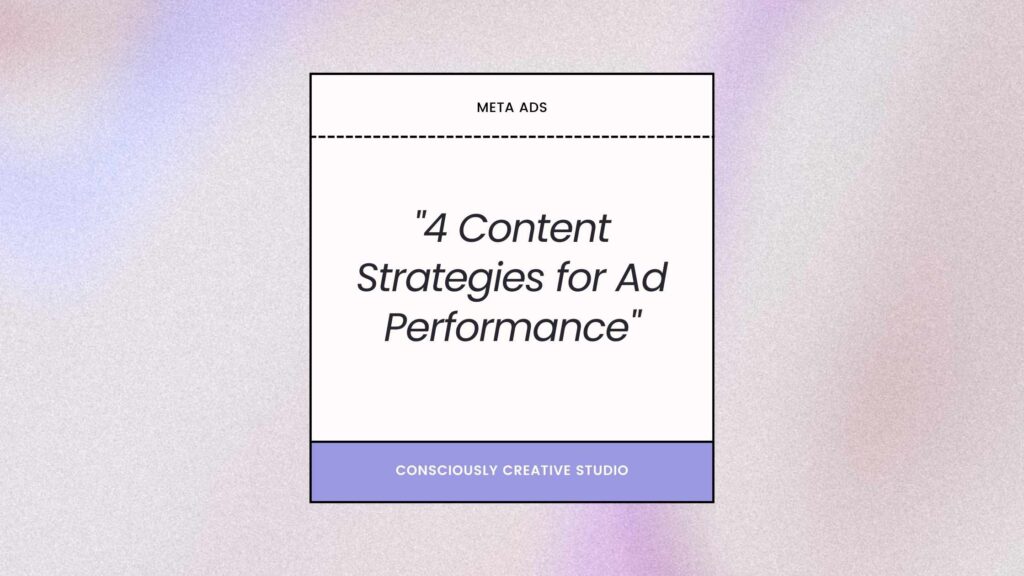
4 Content Strategies for Ad Performance
In the fast-paced world of e-commerce and digital performance marketing, being the pioneer within a highly competitive field, requires more than just a unique product or service; it requires a strategic approach to communication that resonates with potential customers. The following content strategies are essential components of a narrative that challenges, engages, excites and converts. From redefining perceptions, to leveraging universal experiences, these key strategies are about creating messages that capture attention and fosters a deeper connection with the audience.
Our four pivotal strategies, including; Challenging Limiting Beliefs, Us vs Them, Solution Focused and Human Truth, could redefine your ad performance and set your brand apart.
Challenging limiting beliefs
When trying to disrupt a market or product type, audiences can have a preconceived opinion of what your product should do, or be made from, or cost – and for many ecom brands, you are challenging these elements, by using a new material, or using a new method to solve a problem, or costing a lot more than comparative products.
These limiting beliefs will negatively impact your ad performance, so how do we solve this? By directly addressing and challenging them.
A great example of this is our ad content for BRANWYN Innerwear (our partner brand who we’ve had brilliant success for), their bras are made from Merino Wool, which as a fabric has many properties which make it perfect for innerwear (moisture wicking for example to help with sweat and odour). However, many of us have preconceived experience of what wool is: itchy, scratchy, hot, uncomfortable – many things which we do not want for our innerwear.
Our creative strategy directly challenged these limiting beliefs by highlighting them within the first 2 seconds (the hook) we then used the rest of the video to highlight Merino’s unique USPs which make it unlike the wooly jumpers or socks that you may have received for Christmas.
Us vs Them
When speaking to a problem or product aware audience they may have experience with either your product type, or a different product that solves the same problem, by directly comparing your product with a direct or indirect competitor, you can both highlight why your product is brilliant, and why the product on the VS side is inferior.
Think about opposites, healthy vs unhealthy, low sugar vs high sugar, when we want customers to take action quickly (to drive high conversion rates and low CPAs) we have to speak directly to issues with the product they are currently using, and highlight why ours is superior.
Us vs Them ads are used across all formats of marketing, you will see them on the side of packaging, on billboards, TV commercials and direct response ads for ecom brands.
Solution focused
What will your customer’s life be like after they have used your product, how will it have improved? Will they have more time, less stress, will their health benefit or will they be more confident?
By speaking to their future self within the hook, we can fast track their experience, this ad strategy can work with both in-market and unaware customers, due to the increased level of education around their expected results.
Human truth
A human truth is something we can all agree is true, they aren’t defined by brands, they are discovered. An example of a human truth is the classic Snickers campaign: “you’re not you when you’re hungry”. We can all agree that hunger can make someone act in unusual ways (i.e being more grumpy than normal), Snickers used this to build a connection from hunger to their product: their product can help with your hunger, and therefore help with the problem caused by hunger.
Let’s look at a real-life application of human truths. We spearheaded a campaign for a nappy brand using the audacious hook, “I didn’t change my baby’s nappy.” This statement was designed to resonate with the deep-seated human truth of responsible parenting. Though initially provocative, it paved the way to communicate the product’s USP – outstanding absorbency.
Adopting these four strategies offers a comprehensive approach to creating ads that do more than just sell; they represent real human experience and challenge the status quo. Whether it’s through directly addressing misconceptions, creating compelling comparisons, envisioning a better future, or tapping into universal truths, the essence of impactful ads lies in its ability to connect on a personal level. As explored through various examples and insights, the effectiveness of these strategies are proven in practice. We advise that brands who are looking to elevate their ad performance and engage with their audiences should integrate these approaches into their marketing strategies, to drive transactions and strong lasting relationships.
